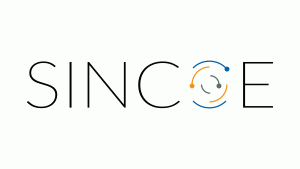03 What kind of learning environment(s) learning takes place
To work on the innovation competency and, above all, to evaluate it, we need an active and preferably collaborative learning environment. The latter is not absolutely essential because we can consider the option of individual innovation. But in complex environments and in the face of non-trivial problems, it will probably be essential to approach innovation as a group to be able to consider different points of view and cover more options than a single person can process with solvency. Therefore, it is interesting to encourage students to work on innovations as a group so that they acquire the competence adapted to working with other people.
In this sense, Challenge-based Learning (see card X in annex), Project-based Learning (see card X in annex), and Service Learning (see card X in annex) can be facilitating environments for the learning process of the innovation competency.
In the above three frameworks, it is usually essential to introduce a flip teaching approach where knowledge acquisition is done asynchronously with support materials (videos, podcasts, readings), and synchronous (face-to-face or remote) doubts are resolved, knowledge is put into practice, and observation, feedback/feedforward, and learning guidance are possible.
On the other hand, it is recommended to incorporate some learning or collaborative work support platform, especially for the team’s asynchronous work moments. But it can also be used in synchronous online work. In this sense, platforms such as Moodle or Sakai can serve as a document repository, forum, wiki, news panel (blog), or chat. Specific platforms can also be activated for document management (for example, Alfresco, or with more limited functions, Google Drive, Office 365, Dropbox, or similar), for forums (put a common one*), for wiki (put a common one), for blogs (WordPress, or similar), or instant messaging tools (Discord, Slack, or similar). Alternatively, the Office 365 ecosystem or the Google suite can complement these platforms with their concurrent document editing capabilities. It may also be appropriate to use tools to make decisions and foster creativity as a group, such as electronic dashboards (Miro, Mural, Lino, etc.) or task managers (Trello, Planner, oneClick). It is also necessary to describe if any repository is used to store information. In addition to software tools, participation protocols must be defined in these platforms (see card etiquettes & online standards).
As the processes/problems posed to students become more complex, structured methods that support the different phases, from problem identification to action plan creation, become more necessary. It is recommended to use a reference framework to guide students’ innovation process, in which divergent activities (opening options/generating alternatives/creativity) alternate with convergent activities (filtering and selecting options/critical thinking) and concludes with an action plan (initiative). In this sense, the Triple Diamond model (Marin-Garcia et al., 2020) (Figure 1) offers a framework that can be applied in different contexts where innovation is intended through problem-solving or detecting and taking advantage of opportunities, either continuously (individually or through improvement groups) or even radically. The model is an extension and adaptation of the double diamond proposed by the British Design Council (Clune & Lockrey, 2014; Design Council, 2007; Tschimmel, 2012) and integrates ideas present in 3I model, HCD model, PDCA, DMAIC and 8D (Cheng & Chang, 2012; Scholtes et al., 2003; Suarez-Barraza & Rodriguez-Gonzalez, 2015; Tapping, 2008; Tschimmel, 2012).
The toolkit that can be used to support each of the activities is too broad and diverse (Clune & Lockrey, 2014; Tschimmel, 2012), and it is not the purpose of this script to list each one of them (see card X in annex), which, on the other hand, can be very specific in some cases, and in others, each team of teachers will have preferred tools already tested in their teaching context.


